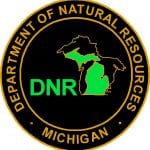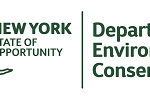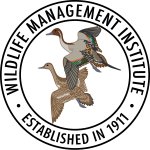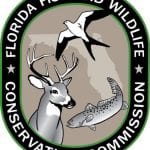Agency Self-Assessment Tool Basics Video
Here’s a video extracted from a webinar created for the Association of Fish and Wildlife Agencies that goes over the basics of the Agency Self-Assessment Tool. Review the 10 Wildlife Governance Principles before watching this video.
Agency Self-Assessment Tool Overview
Application of wildlife governance principles (WGPs) proposed by Decker et al. (2016) necessitates government agencies with legal mandates for wildlife management to embody certain traits and follow certain practices while avoiding others. Improvement of an agency’s alignment with the WGPs is enhanced when it acknowledges where its strengths and weaknesses are with respect to such traits and practices. With reasonable self-awareness of areas needing improvement, the probability of prioritizing and addressing needs effectively is enhanced.
The agency assessment tool for measuring perceptions of an agency’s alignment with wildlife governance principles was developed through an iterative process involving several groups of wildlife professionals. The process identified traits and practices of agencies that facilitate or impede application of wildlife governance principles. Traits are characteristics an agency possesses, typically reflecting philosophical orientations that are either consistent with (enable) or antithetical to (hinder) application of the WGPs. As the label indicates, practices are behaviors or actions performed by an agency that support or impede the WGPs.
We assert that an agency that is well aligned with the principles will be able to meet its public trust responsibilities effectively. That being said, alignment with the principles is not always obvious and the degree to which alignment exists often depends on the circumstances.
The traits and practices measured by the tool are organized into five themes:
- strategic thinking and organizational adaptability
- evidence-based and broadly informed decision making
- transparency and accountability for decisions and actions
- inclusiveness and diversity
- capacity for conservation
The connections between the WGPs, themes represented by good wildlife governance, traits of an agency and its practices is portrayed below. This framework was used in the creation of the assessment tool and in the public trust practices workshop design.

The assessment tool is organized into two sections, one focuses on traits and the other on practices. For traits, respondents are asked to use a 5-point scale to indicate where on the continuum they would place their program/section, division, agency or organization with respect to each trait.
Example:

For the practices portion of the assessment, respondents are asked to indicate the degree of satisfaction with each practice in governance of wildlife resources by their agency, organization, or state. The response options for this set of questions are: not at all satisfied; slightly satisfied; moderately satisfied; very satisfied; and extremely satisfied. In addition to satisfaction, participants are asked to rate the importance to address these practices. Response options include: not at all important; slightly important; moderately important; very important; and extremely important.
Example:

To make it easy to complete the assessment tool, administer it and compile the data it generates, we use on-line, web-based technology.
Click here for information about the assessment process or to sign your agency up for an assessment.
Agency staff are asked to complete the WGP assessment tool ahead of the workshop because the results are used to tailor discussion about needs for change in the traits and practices of the organization/agency/state. Results are presented in aggregate; individual responses are not shared. We go through an example of the results to demonstrate how they can be used.
The Data Reported
Means (and ranges) for ratings of traits and practices made by evaluators are reported in aggregate, by each theme (grand means). Thus traits under each theme will have grand mean value between 1 and 5, bounded by the scale used in the instrument. Practices under each theme also will have separate satisfaction and importance grand mean values between 1 and 5, again bounded by the scale used in the instrument. The results report for a case (e.g., a particular workshop focused on state X) will have five grand theme means for traits and five for satisfaction with and importance of practices. Recall the themes are: strategic thinking and organizational adaptability; evidence-based and broadly informed decision making; transparency and accountability for decisions and actions; inclusiveness and diversity; and capacity for conservation.
Example of a grand mean ratings table for traits, satisfaction with practices, and importance of the practices.

Spider diagrams are included in the report to provide simple visual representations of the aggregate assessment results. The diagrams represent average values of responses by theme (the data are the same as that presented in the table above.)
These diagrams can supplement the grand means table to help workshop participants think about the culture of their organization or unit (reflected in traits) and how these may relate to overall satisfaction with practices within each theme; i.e., the presence or absence of practices and how well practices are applied. Thus, the first spider diagram provides a broad snapshot of the traits of the organization.

A second spider diagram enables a quick assessment of respondents’ assessment of satisfaction with practices of the organization compared to the importance they attribute to each practice, by theme.

The report also includes multiple tables and scatterplots to help an agency identify priorities that the participants can agree to focus on after the workshop—possible action items. The scatterplot identifies which practices are of the highest importance but lowest satisfaction, providing a place to start the discussion of priorities for improvement.

If you are interested in conducting an agency self-assessment workshop, visit this page.





